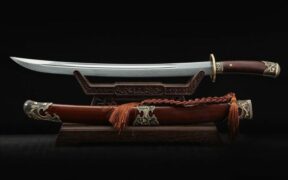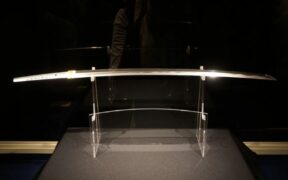Our content features commercial links to our products, committed to transparent, unbiased, and informed editorial recommendations. Learn More
Flamberge: A Guide to the Flame-Bladed Swords
NO AI USED This Article has been written and edited by our team with no help of the AI
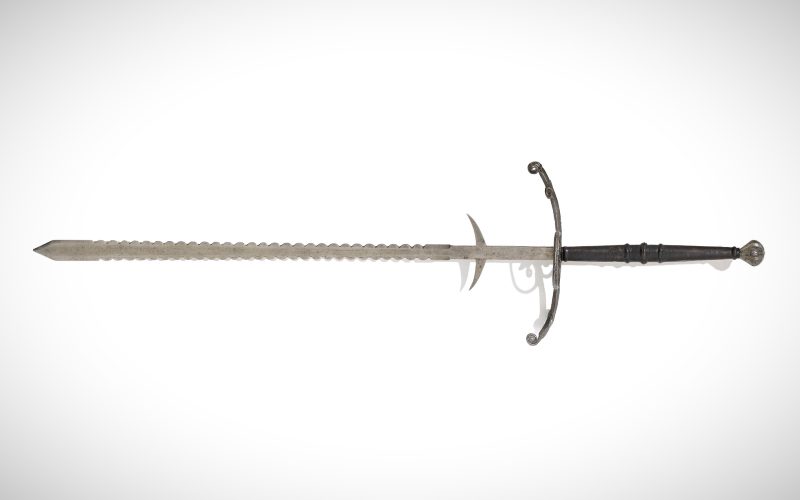
The flamberge has become synonymous with flame-bladed swords. However, the term has confused history, as it originally described the two-handed swords of the German Landsknechts and was later used to refer to the dish-hilt rapiers with a straight blade. Although many collectors refer to various swords with undulating edges as flamberges, they are more appropriately called flambards.
Let us talk about the history of flame-bladed swords, their unique characteristics, and some common misconceptions about them.
Different Flamberge Swords in History
Many collectors misapplied the term flamberge to describe several flame-bladed swords, which should be properly called flambards or flammards—from the German word Flammenschwert, meaning flame
1. Zweihander (Two-Handed Sword )
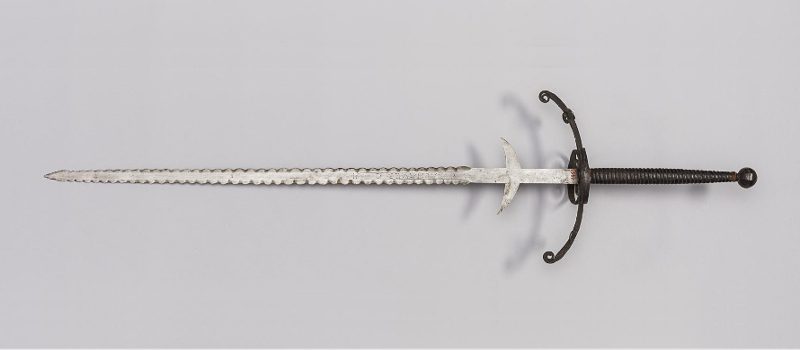
The German Landsknechts mercenaries used their two-handed swords to hack into enemy pike units. They were originally known as doppelhänder or beidenhände, meaning double-hander or both-hander, respectively. Today, they are widely known as zweihander, which is a relatively modern term.
Although most zweihander had straight blades, others featured a flambard blade which many erroneously call flamberge. Even though they had a massive length measuring 150 to 175 centimeters, they were not as heavy as they looked, only weighing about 5 to 7 lbs. These two-handed swords featured long hilts, ricasso, and parrying hooks that serve as a secondary guard.
2. Renaissance Flamberge Rapier
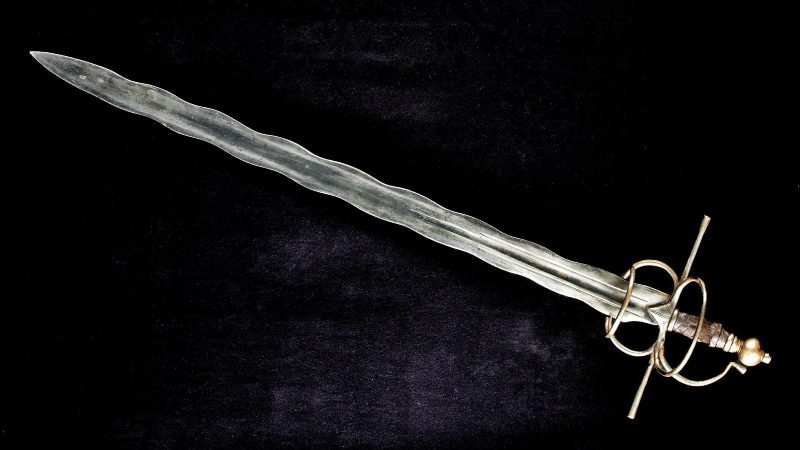
Derived from the Spanish term espada ropera, the rapier served as the gentleman’s weapon during the 16th and 17th centuries. Europeans used the
These so-called flamberge rapiers have the typical Renaissance swept hilts, which set them apart from the dish-hilted rapier. Their overall length varies from 115 to 140 centimeters, though earlier military rapiers had broad, double-edged blades, suitable as cut-and-thrust weapons. The rapier of the 16th century typically had long, thin blades designed for swordplay.
3. Dish-Hilt or Transitional Rapier
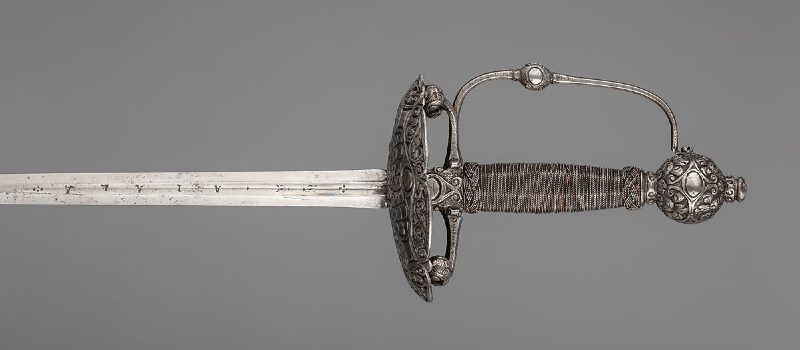
Modern scholars use the term transitional rapier for a
Because of its lightness, the dish-hilt rapier became the favorite dueling
Characteristics of Flame-bladed Swords
Today, the term flamberge often implies a German two-handed
Here are the characteristics of the flame-bladed swords:
Metal and Construction
Two-handed
Most rapiers have flexible blades, though others have stiffer ones. Today, many swordsmiths craft Renaissance rapiers with flambard blades, often from high carbon steel and other material suited for fencing.
Blade Appearance
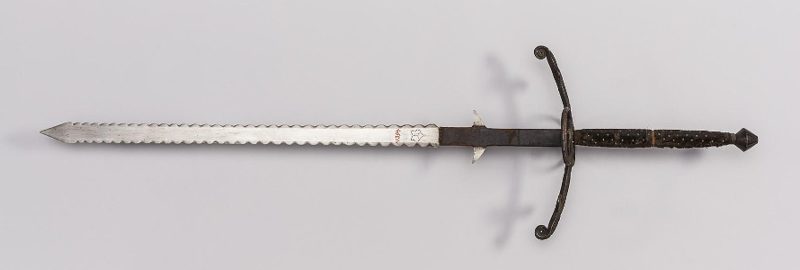
Two-handed swords have long, usually double-edged, flambard blades with a sharp or rounded tip. The blades also have a long ricasso, allowing the swordsman to safely grip below the crossguard. There are also flukes or parrying hooks at the base of the ricasso to protect the hand. They tend to have a thick ricasso, about 1.5 centimeters, but modern replicas generally have a ricasso of the same thickness as the blade.
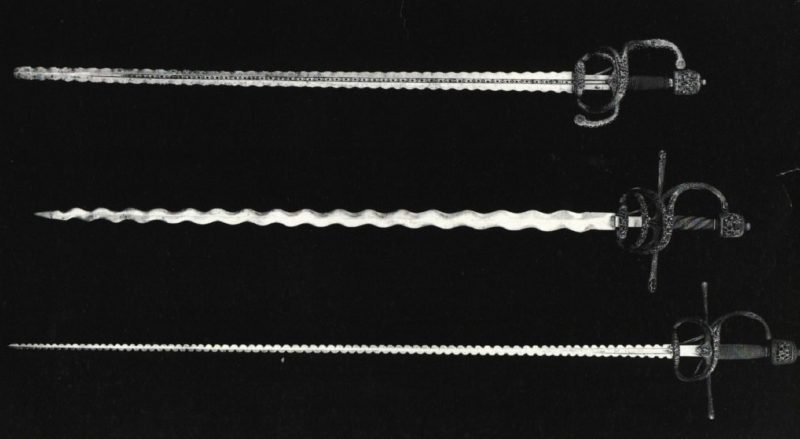
Rapier blades vary considerably in thickness and cross-sectional shape, even for flambard blades. Some military cut-and-thrust rapiers had broader blades, but the most common were long and thin ones. Some still maintain sharp undulating edges, though others are only sharp at the tip.
Size and Shape
The two-handers have an overall length ranging from 150 to 175 centimeters and a blade length of 120 centimeters or longer. On the other hand, the Renaissance flamberge rapiers come in all shapes and sizes. Most examples have an overall length about 115 to 140 centimeters.
Sword Mounting
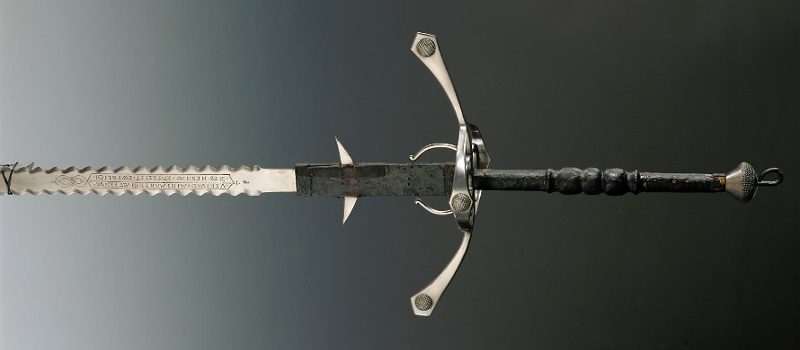
The 15th-century two-handers have long hilts and straight crossguards, sometimes with side rings on both sides of the quillons. The pommel may also be triangular or pear-shaped. Modern replicas often have leather-wrapped ricasso and comes with a leather scabbard.
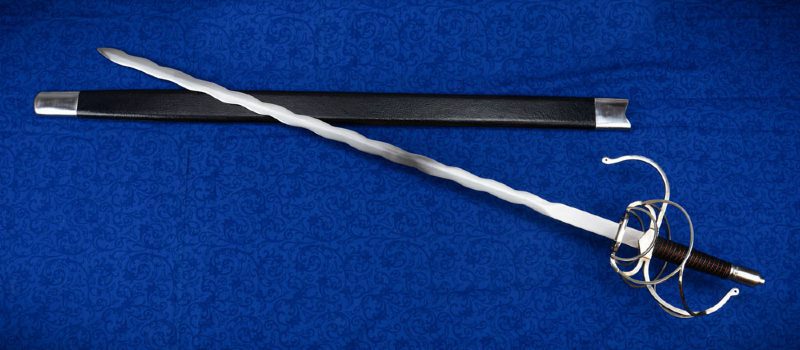
The Renaissance flamberge rapier has varied hilt designs and often features the iconic swept-hilt and sometimes spherical pommel. Some rapiers have steel or wooden hilts and come with leather scabbards.
Facts About the Flamberge Sword
Although the flamberge and related swords have a familiar appearance, there are several misconceptions about them. Here are the things you may find interesting about the weapons:
The term flamberge for a flame-bladed
Flamberge is a French word, allegedly from the term flamber, which means to flame, glisten, or shine. However, flamberge is of German origin, apparently from the terms flane and bergen, meaning flank and protect. Hence, flame-bladed swords are more appropriately called flambards or flammards, derived from the German word Flammenschwert, meaning flame
The flambard blade made little difference in its cutting qualities.
Many assume that a flambard blade would inflict a more deadly wound, but it is no more effective at cutting than a straight one. Most two-handers with a wavy, undulating edge functioned as ceremonial or parade weapons. The Landsknechts also often wielded the straight type in battles.
The zweihanders were Renaissance, not medieval swords.
The two-handed
The Landsknechts made their reputation with various weapons.
The name Landsknechts comes from the German words land and knecht, which means country and servant. Apart from the zweihander, they used several polearms like halberds, pikes, partisan, daggers, and others.
The zweihander served as a weapon against pikemen.
The doppelsöldners wielded zweihander to chop the shafts of pikes in battles, but there are no known historical teachings of their use in fencing. The doppelsöldner marched to the enemy pike formation, violently swinging his weapon to cut the sharp pike ends. If he was successful, he could create a breach in the opposing phalanx.
Many two-handers with a flambard blade served as parade swords.
By the mid-16th century, two-handers disappeared from war and served as ceremonial weapons called bearing swords, parade swords, or Paratschwert. They were more ornate, longer, and heavier than battlefield weapons, weighing about 10 to 15 lbs. However, many museums feature them as if they were actual combat weapons, disregarding the factors that they are of impractical size and weight and therefore, are of little use as offensive weapons.
The German zweihander should not be confused with the Scottish two-handed claymore.
The Scots also had two-handed swords with long blades, measuring about 140 centimeters, but they did not have the parrying hooks at the ricasso. Sometimes called the Scottish long swords, the two-handed claymore got its name from the Scottish Gaelic claidheamh mór, which means a great
The Malay dagger kris also features a wavy blade.
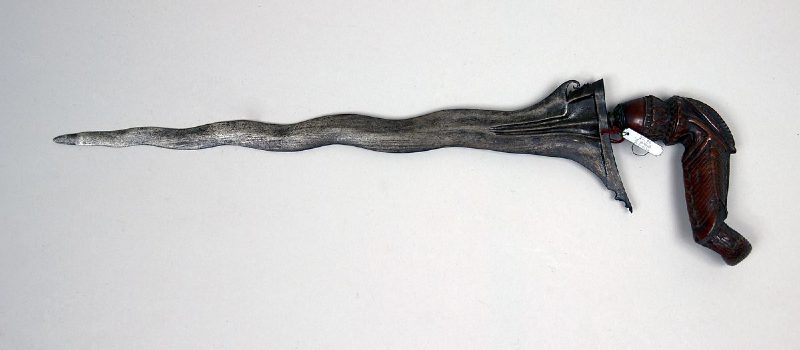
The kris or keris, is a Malay knife with a double-edged but asymmetrical blade. The most popular blade variety is the wavy type, often with five to fifteen waves its entire length. The finest blades come from Java and Bali where it is part of the local culture. Several blade shapes are known, though straight ones are more common than flame-bladed ones.
Conclusion
Swords with a wavy blade appear in many cultures around the world. The term flamberge has been used to describe the German two-handed swords, the Renaissance flame-bladed rapier, and the transitional rapier. In modern times, it is a widely accepted term for flame-bladed swords, capturing the interest of historians and collectors alike.


